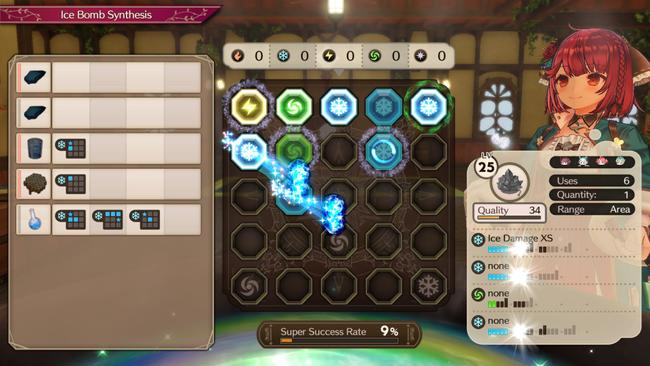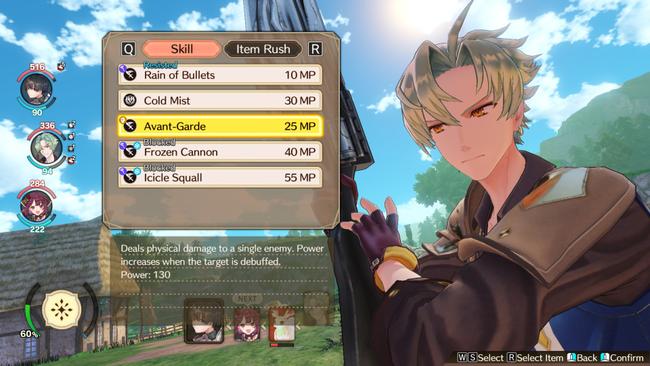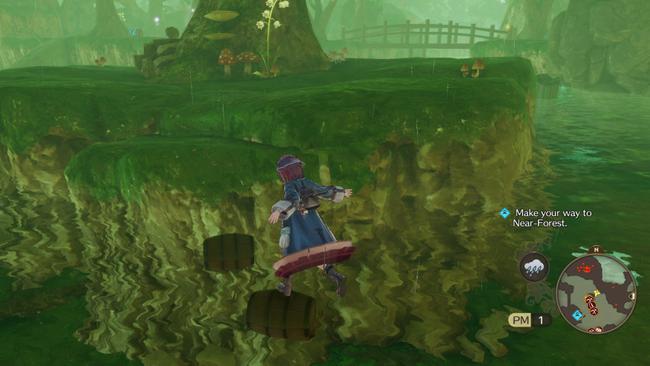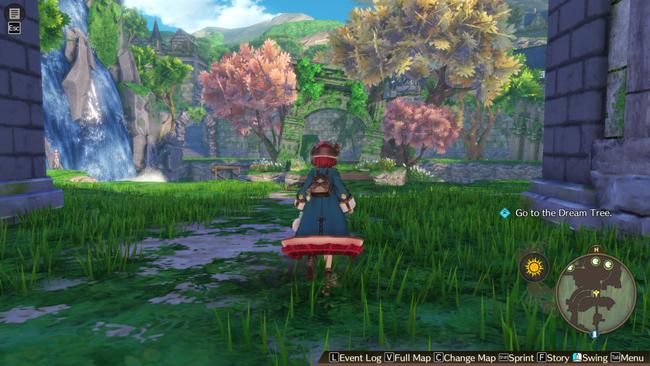
Atelier Sophie 2: The Alchemist of the Mysterious Dream Review
Generally, Atelier games come in groups of three, as was previously the case with the Mysterious trilogy. However, just like Atelier Lulua, sometimes there's room for a fourth entry. In this case, the 4th entry in the Mysterious series comes right after Sophie's first adventure with Atelier Sophie 2: The Alchemist of the Mysterious Dream.
Sophie Neuenmuller is on her way to take the official alchemy exam, along with her tutor Plachta. Upon finding a large and beautiful tree, they are suddenly sucked into the dream-like world of Erde Weige and separated. While Sophie quickly finds an alchemist named Plachta, she is not the same one as her friend. This mysterious adventure continues not only with these two but many other residents of the world.
If you’re unfamiliar with the original Atelier Sophie, there is an option on the main menu that recaps the event of her first game. The sequel’s story is the usual heartwarming affair, focusing largely on the pursuit of personal dreams and what that means to each person. Alongside the main story is the ever-present amount of side scenarios where you get to know individuals on a more personal basis. For the most part, town requests are separate from any character story, with no time limit, making them easier to complete. I feel outside of a few NPCs, I was much less involved with the general townsfolk than I was in Ryza 2.

I’m personally not the biggest fan of the puzzle-like alchemy system in Sophie’s games. My main issue with it is that I can’t easily start at the base level of an item and continue it into the final project like I could with Ryza’s loop system. Still, it isn’t difficult to get by even without abusing auto-fill. Alchemy becomes more complicated than simply placing ingredients into a grid and trying to fit them all, as you unlock various catalysts which change things like disappearing linked components but preserving levels, or increasing the item's effect by half the number of item links. Becoming closer to your teammates will also unlock various assist skills such as increasing product quality based on the number of fire links. All of these alchemy additions create a significant skill ceiling in terms of item customisation. I’m excited to see what broken items the true master alchemists of the community are able to create.
Sometimes it is a little difficult to figure out how to unlock some recipes, but your book will tell you how to earn most of them. Sophie and (the new) Plachta can both create, each with their own alchemy levels, and some recipes are exclusive to one or the other. This seemed to be more of an element for the story rather than being strictly necessary but it isn’t a bother to manage.
Turn-based battles are back, but with the fast-forward options, you can make it almost as fast as you want. The party set up involves three frontline members, who will take their turns, and three support characters. These supports can be swapped in to defend others from attacks (so long as the requisite metre is filled) or use unlock twin attacks that are unique to the pairing. Another gauge, when filled, allows for super fun animated big hitting attacks, or even heals. These techniques are super useful for boss fights, especially as bosses, and some other enemies, have an aura that needs to be broken through before you can really deal proper damage. Some abilities can have an effect over time and will appear in the turn order, so it’s a good idea to keep track of those. In some instances, you can change the weather in a battle to increase the vulnerability of your opponent, but this didn’t seem to be something I could do as I pleased. The party system also meant that all of my team felt actually useful and I had to ensure they were all well equipped.

The battles in Sophie 2 are “seamless”, that is, upon encountering an enemy you’ll step into combat within the same environment, and past the experience screen will be standing in the same spot you were last. Often the nearest two enemies will join the fray and be gone upon defeat. While it’s obviously not perfectly seamless, it is a great improvement from prior Atelier entries, with battles getting started much faster and the environments being able to shine.
One thing you may notice is that Sophie’s combat level starts at 20, as was the cap in her first game. I can’t say that makes much of a difference, but it is a nice touch to show her prior experience. Of course level is hardly the most important thing in these games, as it is the equipment and items your party wields that matter the most. Items are thankfully back to being regular use but you can increase how many times something can be used with enough care in its creation. Thankfully with the shopkeeper Pirka’s auto-restocking, and item duplication you are unlikely to need to worry about losing any items.
Characters earn ability points through completing individual tasks and discovering new locations. I focused primarily on maxing out the abilities that helped with alchemy, but there are many combat ones too. Actual combat skills can even be learned by improving enough of these abilities.
The use of multiple gathering tools is now a continued tradition, though every gathering spot has their place, so there’s no manually switching between tools this time. However, major gathering spots have been added bringing you into a mini-game to gain extra elements, currency, and so on. These range from stopping a wheel to slamming as many bugs as you can, I found the fishing one to be the only challenge.

Early on you’ll create objects that can be used to change the weather in various locations. This is often used to open up another pathway, but also changes the enemies encountered and types of items to be gathered. These elements are mostly quite basic puzzles, even when doing more than changing the weather, but it is cool to explore the way the environment adapts. Perhaps due to this, swimming has not made a return, and sadly Sophie does not get her own mount to make travel faster. Though, with the fast travel system, it’s never too hard to get to the specific area you want. The dungeon-like areas aren’t much different to the areas before them. I think that’s because they wouldn’t don’t want to repeat themselves so soon after creating a new exploration system in the last game (though I hope it returns in future).
While the Mysterious games have previously been soft watercolour-esque affairs, this entry takes advantage of the leaps between generations, with characters still maintaining a doll-like appearance but the overall game being much more vibrant and detailed. Locations are often stunning as Erde Weige truly is a dream-like world. While I enjoy her as a person, I would still report Alette to the fashion police, and again the boys are a little too bland. Other characters have some beautiful designs that mesh well with the updated visual flair.

The soundtrack maintains this ethereal fantasy feel. It shares some minor similarities with Sophie's first game but is generally quite different. My favourites were the upbeat and energetic battle tracks. Playing on PC, I rarely noticed any performance issues (the only setting I messed with was to turn off motion blur). I had relatively fast loading times between the “seamless” battles and only ever experienced one crash.
Atelier Sophie 2 manages to synthesise old and new in a way befitting improvements to the franchise while leaving it comfortably with the rest of the Mysterious games. It doesn’t quite reach the heights of Atelier Ryza 2, but will still definitely keep most Atelier fans quite happy.